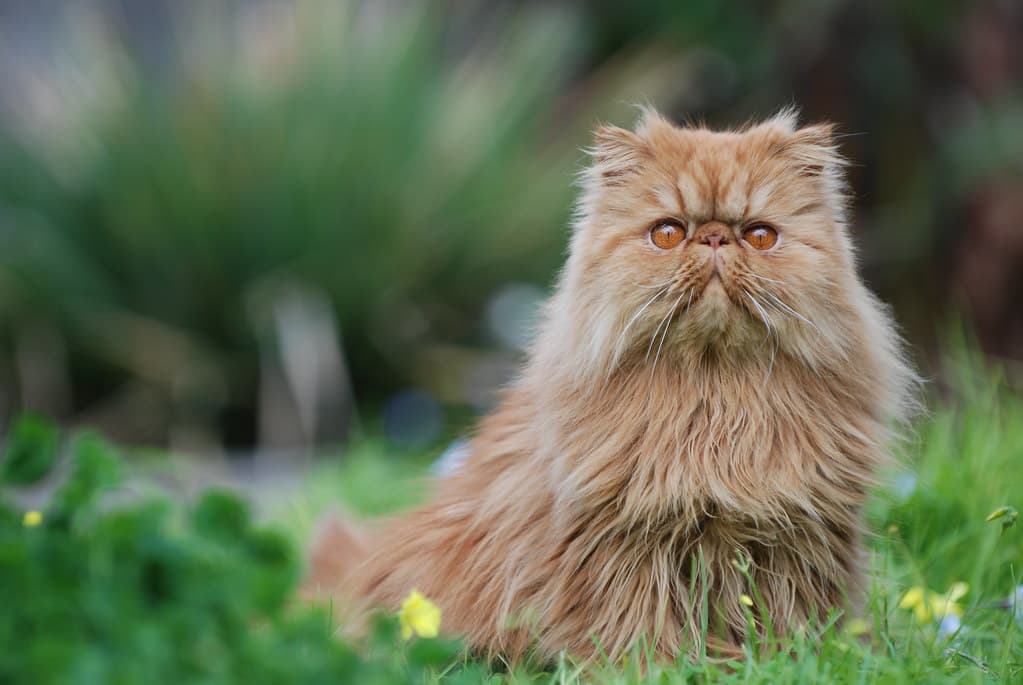Persian

Height
Male:25,38 Female:25,38Lifespan
8-17 yearsPedigree
NoWeight
Male: 4,6-5,9 kg Female: 3,2-4,6 kgPros
- Affectionate
- Docile
- Quiet
- Beautiful
- Playful (in short bursts)
- Good companion
- Relatively clean
- Adaptable to apartment living
Cons
- High grooming needs
- prone to hairballs
- potential for breathing problems (brachycephalic)
- prone to polycystic kidney disease (PKD)
- sensitive to heat
- can be picky eaters
- eye discharge/tear staining
- expensive to purchase.
Introduction of the Persian cat
The Persian cat is a long-haired breed of cat that has been very popular for many years. They are known for their distinctive physical appearance, which includes a long, flowing coat, a flat face, and large, expressive eyes. Persians are gentle and affectionate cats that make wonderful companions.
The Persian cat is one of the oldest known breeds of cats, and they are believed to have originated in Persia (now Iran). They were first brought to Europe in the 17th century and quickly became popular among the aristocracy. Persians were also popular in the United States, and they were one of the most popular breeds of cats in the 19th and 20th centuries.
Persians come in a variety of colors and patterns, and they have a wide range of coat lengths. The most common coat type is the long, flowing coat that is associated with the breed. However, Persians can also have a medium-length or short coat. Persians have a variety of eye colors, and the most common eye color is copper.
Persians are gentle and affectionate cats that make wonderful companions. They are known for their laid-back personalities and their love of attention. Persians are also very intelligent cats, and they can be trained to learn tricks. However, Persians can also be quite independent, and they may not always be interested in playing or interacting with people.
History of the Persian cat
The Persian cat is one of the oldest known breeds of cats, and they are believed to have originated in Persia (now Iran). They were first brought to Europe in the 17th century and quickly became popular among the aristocracy. Persians were also popular in the United States, and they were one of the most popular breeds of cats in the 19th and 20th centuries.
The Persian cat is believed to have descended from the Pallas's cat, which is a wild cat that is native to Central Asia. The Pallas's cat has a long, thick coat that helps it to survive in the cold climate of its native habitat. The Persian cat inherited the long coat of the Pallas's cat, and this is one of the most distinctive features of the breed.
The Persian cat was first brought to Europe by Italian traders in the 17th century. The cats quickly became popular among the aristocracy, and they were often kept as pets in royal courts. The Persian cat was also popular in the United States, and it was one of the most popular breeds of cats in the 19th and 20th centuries.
Interesting facts about the breed
- Persians are one of the oldest known breeds of cats.
- They are believed to have originated in Persia (now Iran).
- They were first brought to Europe in the 17th century.
- Persians are known for their long, flowing coats.
- They come in a variety of colors and patterns.
- Persians are gentle and affectionate cats.
- They make wonderful companions.
Characteristics
Activeness
Docility
Friendliness
Grooming
Hardiness
Health
Independence
Intelligence
Need for Attention
Playfulness
Shedding
Vocality
Are you looking to buy the Persian breed?
See current available pets or share this breed with your friends!